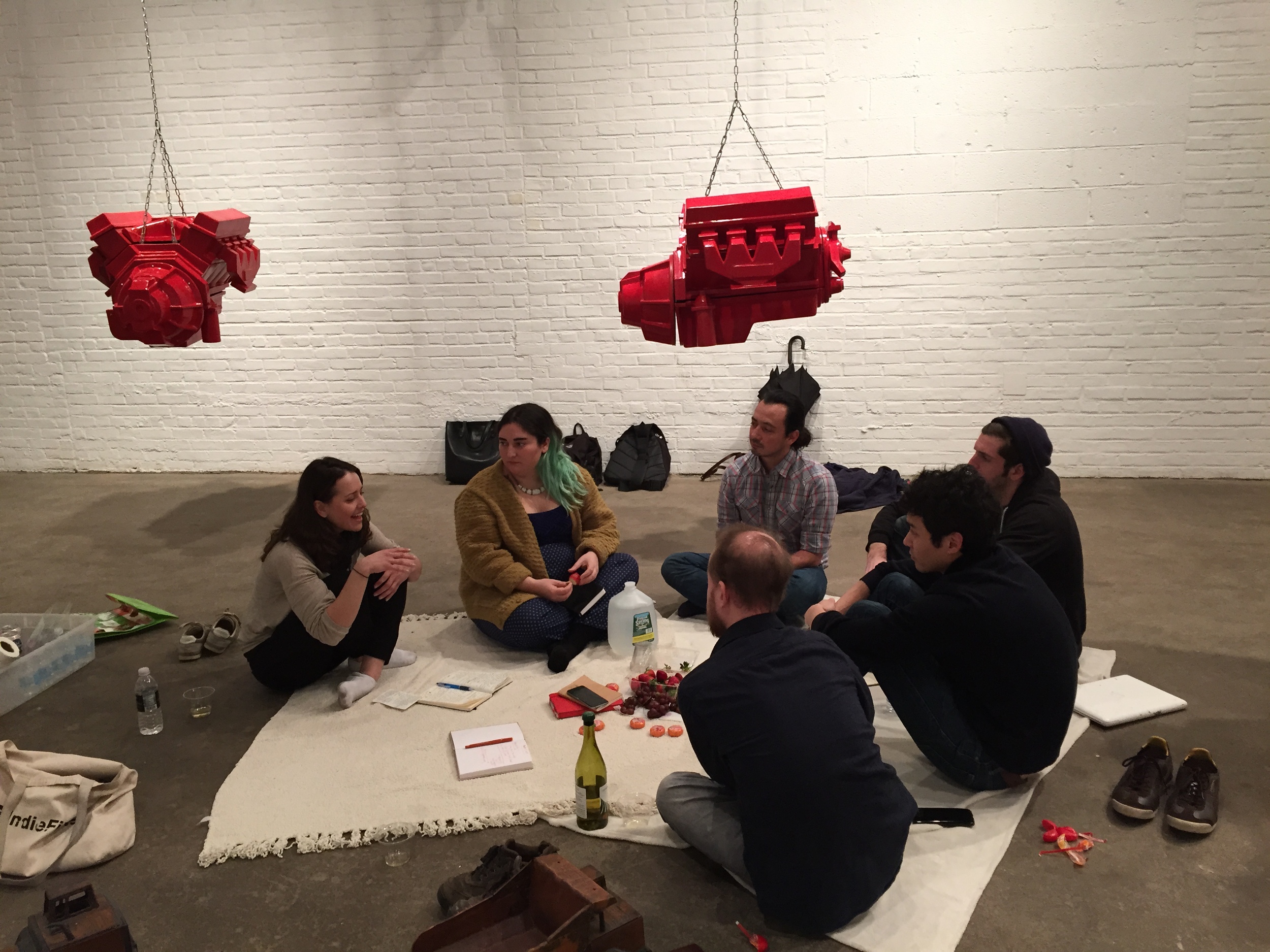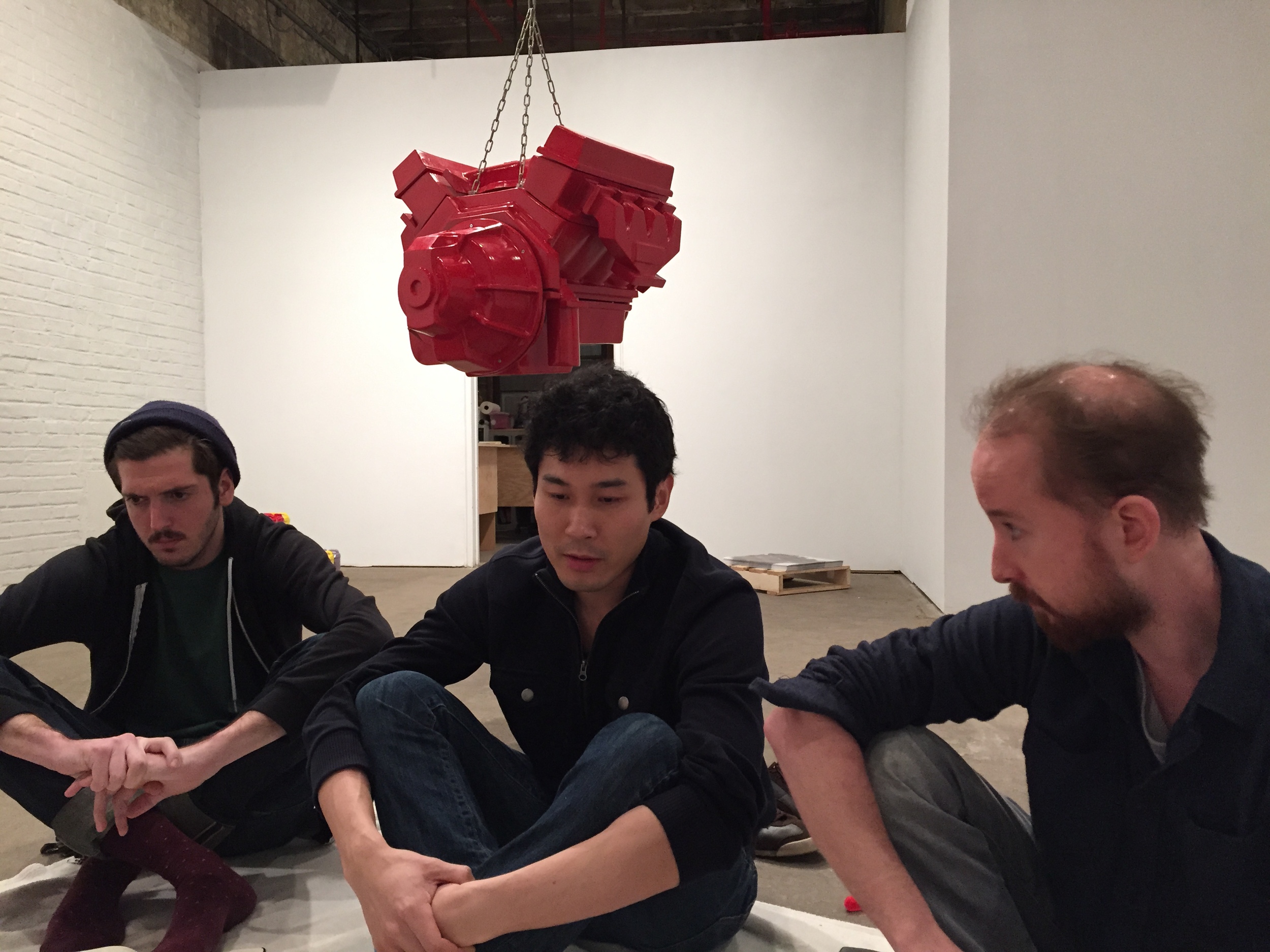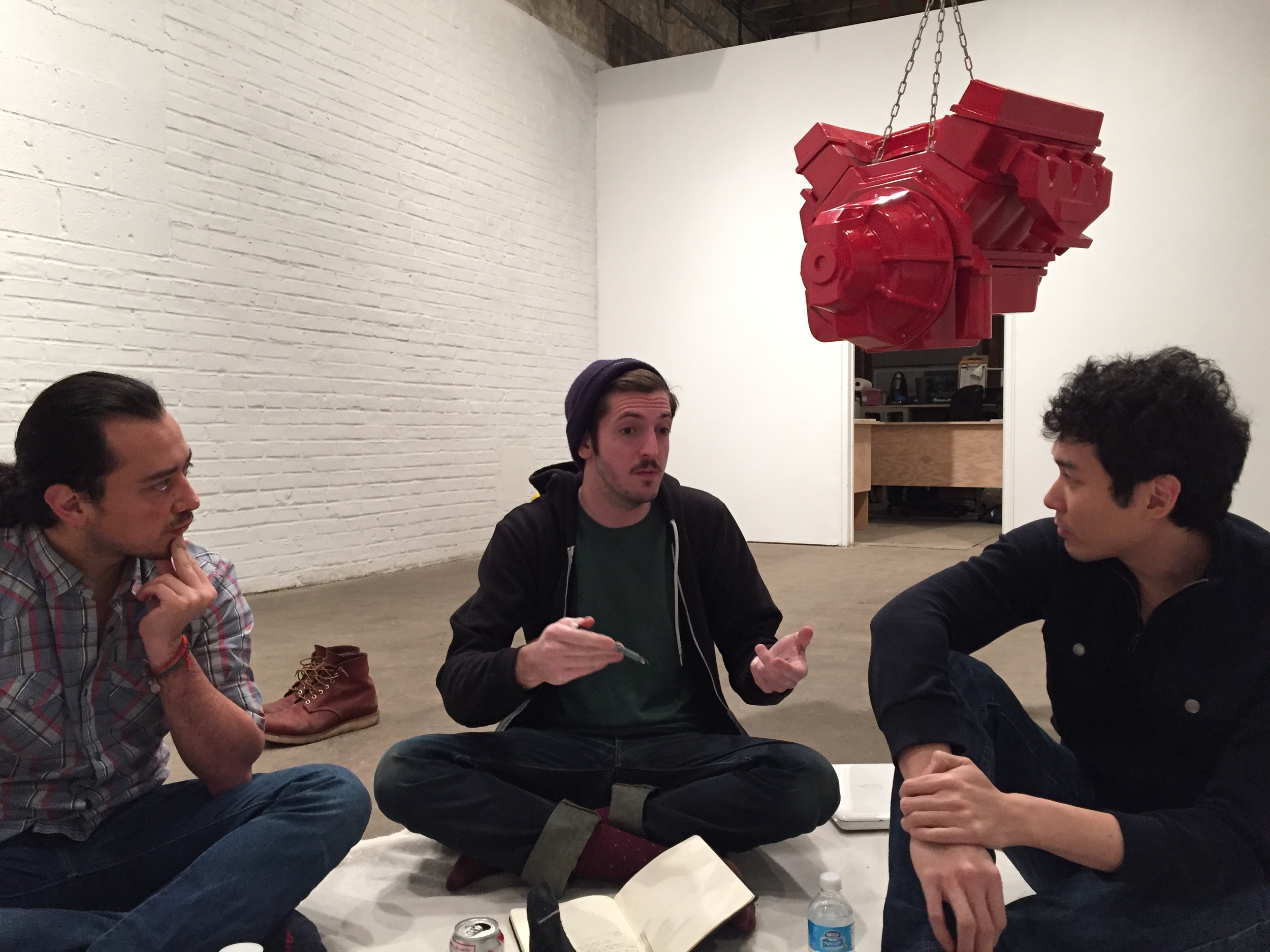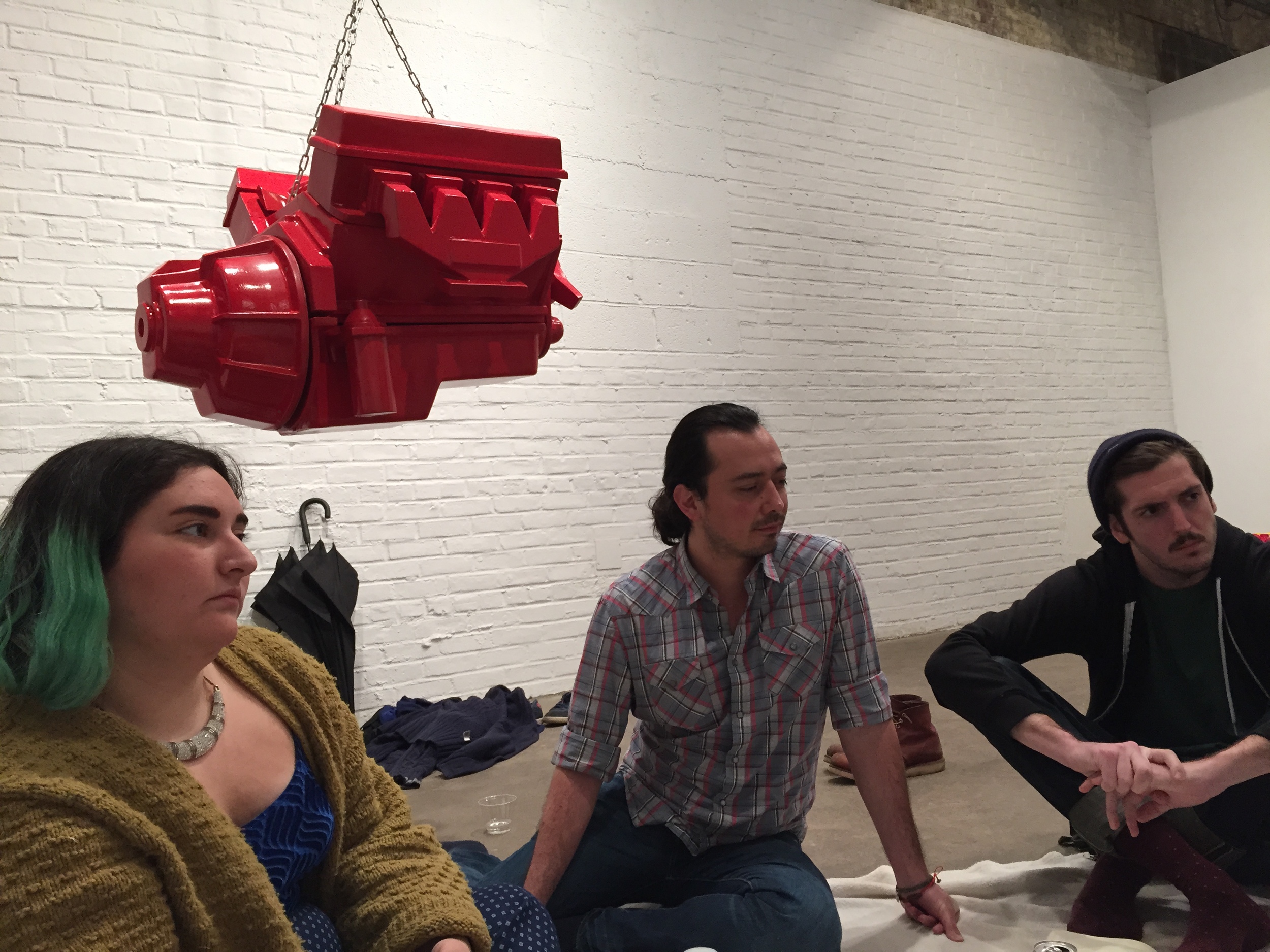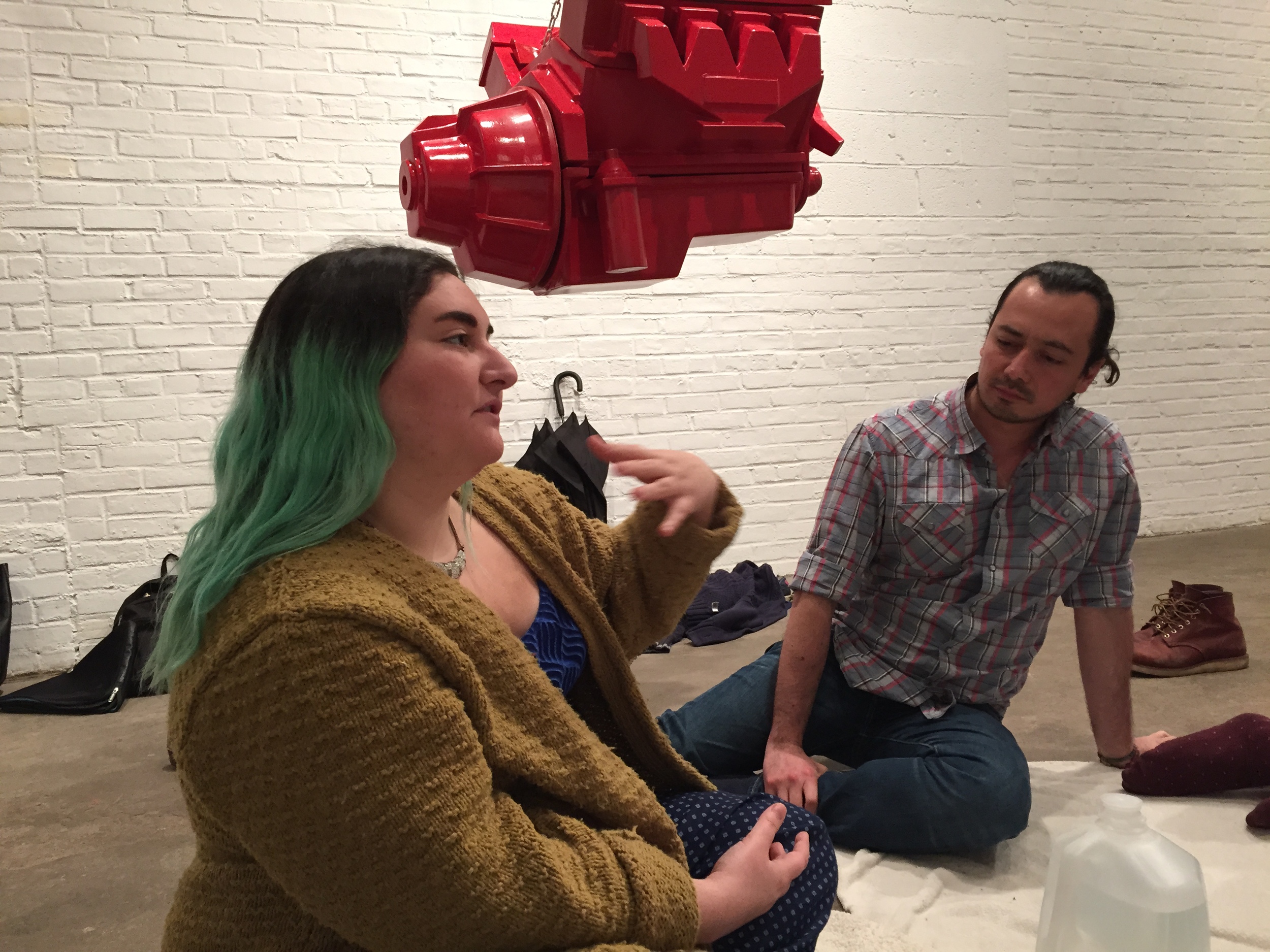March 10, 2015
Location: ArtHelix (David Packer: Machina exhibition)
Moderator: Marina Ross
Contributors:
Please allow 30 seconds for the audio to load
- How do you use skill/craft in a responsible way?
- How do systems of problem solving exist in art-making?
- What is irresponsible work?
The 'responsibility' series begins at ArtHelix Gallery in Bushwick among David Packer’s whimsical red car engine sculptures as the group picnics on the floor. Marina Ross moderates the discussion and asks about what the responsibilities of the artist are and what responsible work looks like. She begins by focusing on the element of making in relation to the job of the artist and how the use of skill and craft can be executed responsibly. Emily Oliveira, whose practice is heavily rooted in ideas of craft, explains how she purposely does not work virtuosically in order to create an art object that does not look like a luxury good. Isaac Mann talks about how skill should aid for a function but that’s also where it should stop. He says that an artist must execute their work with a certain amount of skill to not be confusing to a viewer but it cannot carry the work. Pia Coronel talks about how through the process of laboring through a work, the end result will speak more to her about her original intentions for creating the work. This conversation transitions into the idea of modes of problem solving that exist in the art world and how that becomes confusing when thinking about other artists’ practices. One of the responsibilities of an artist is to create a system of problem solving. For instance, artists who use assistants have developed a system of problem solving where the assistants are a tool, as described by Emily. She says that similarly to how printers help artists produce images, artist assistants also work as tools. Wilson Duggan talks about how the artist must be responsible when using the assistant. If the work is supposed to be about personal gesture and the artist’s hand, then it would certainly be wrong to use an assistant. Trevor Zhou expresses that he feels uncomfortable when artists use assistants to make work and we begin to compare the relationship between a filmmaker using assistants to an artist using assistants. Isaac questions what irresponsible work looks like. Manuel Martagon describes how a recent exhibition at a museum in Mexico where controversial artist Hermann Nitsche created a show using animal blood was cancelled. The cancellation was due to fear of upsetting Mexican residents in a climate of bloodshed happening throughout the country. While the museum felt that it would be irresponsible to the residents to show this work, critics say that it’s irresponsible of the museum not to express an artist’s point of view which could actually help visitors come to terms with the recent happenings in Mexico. Pia explains that irresponsible work is that which is made without an intention. Wilson Duggan adds that it almost makes the work reckless, like an engineer building a structure that is not up to code.
